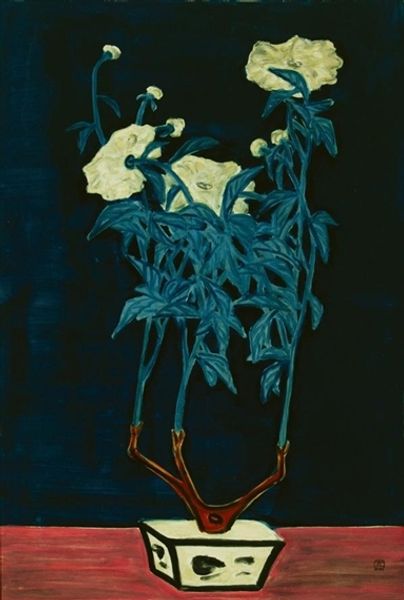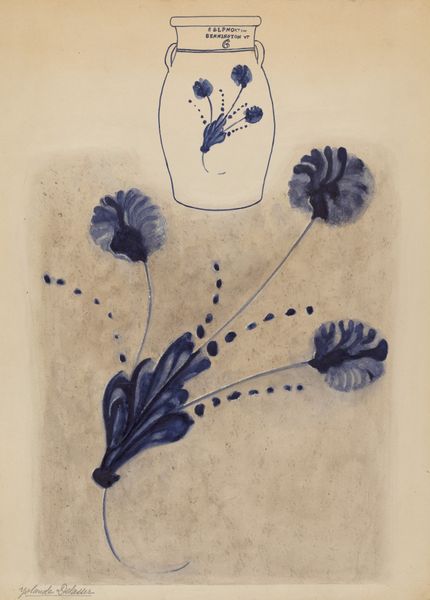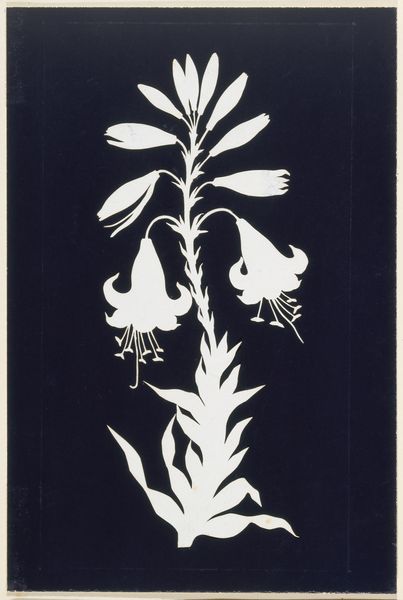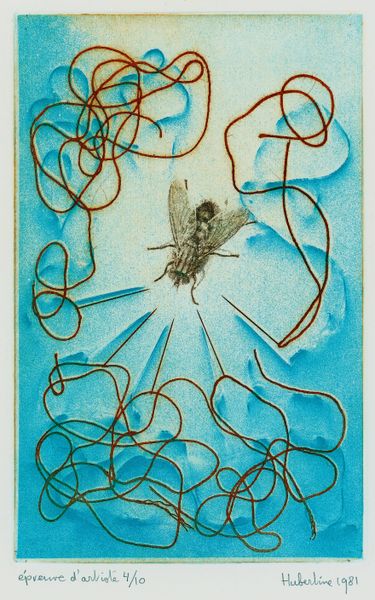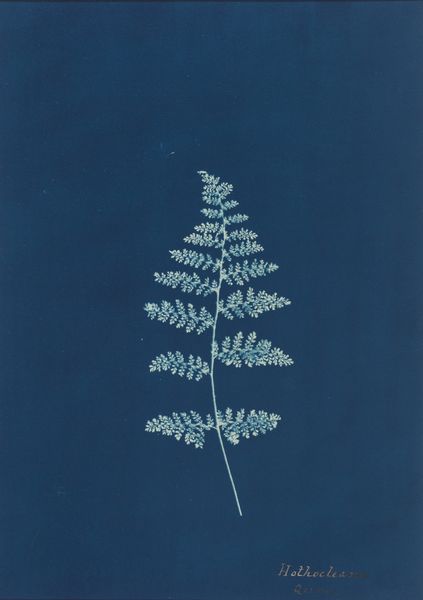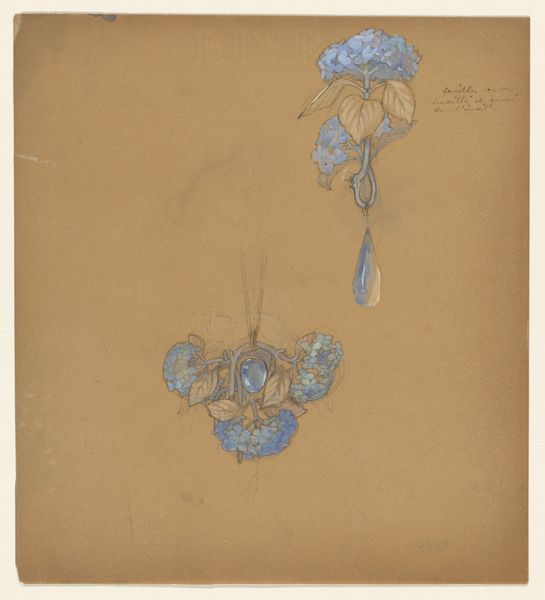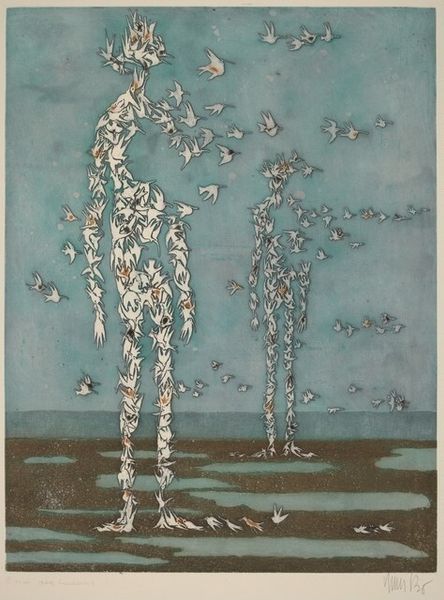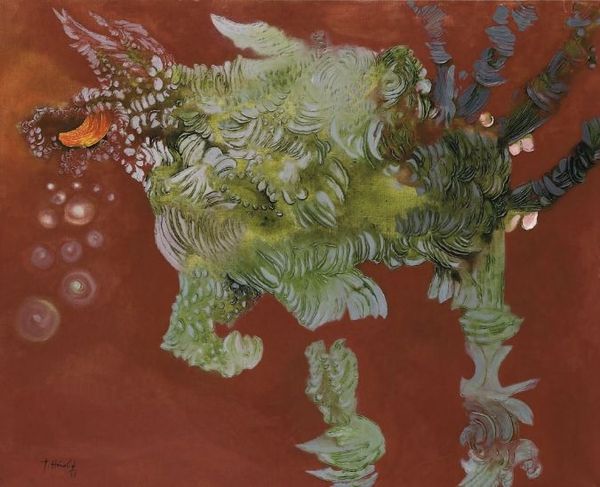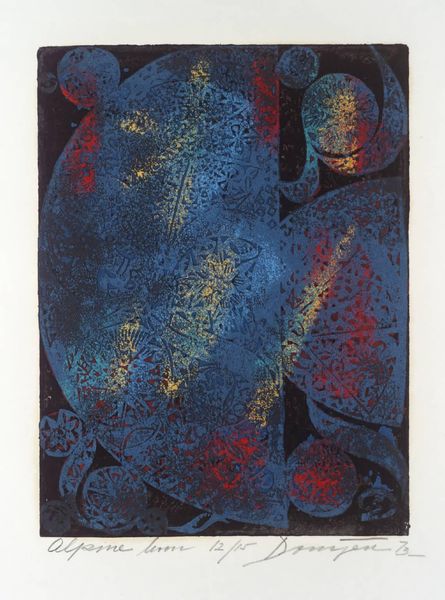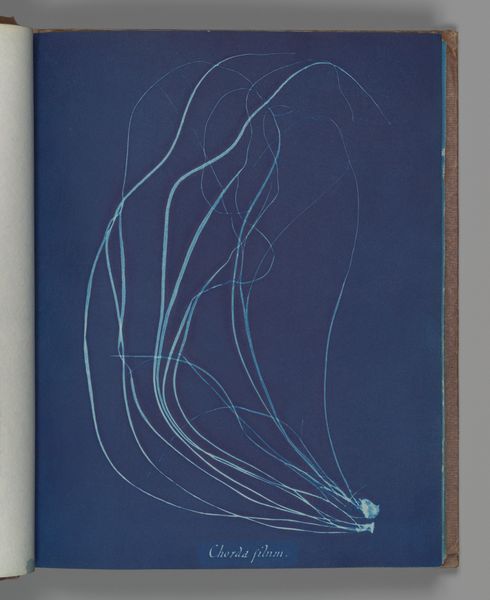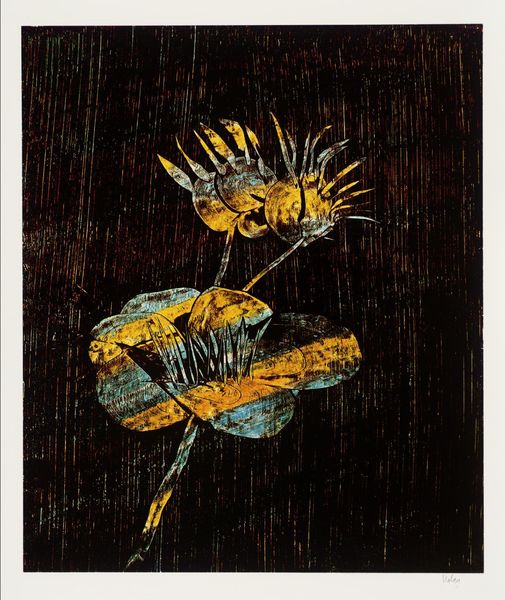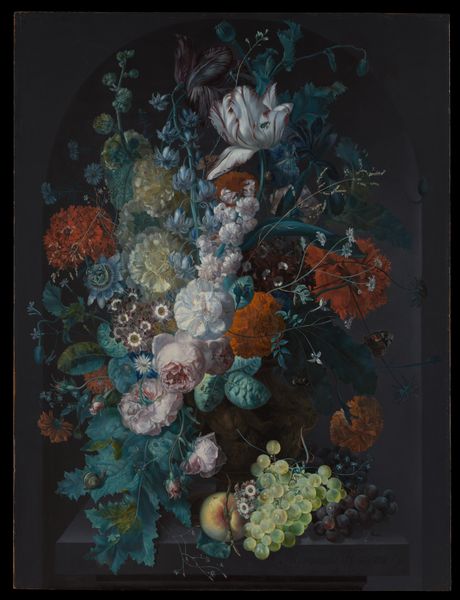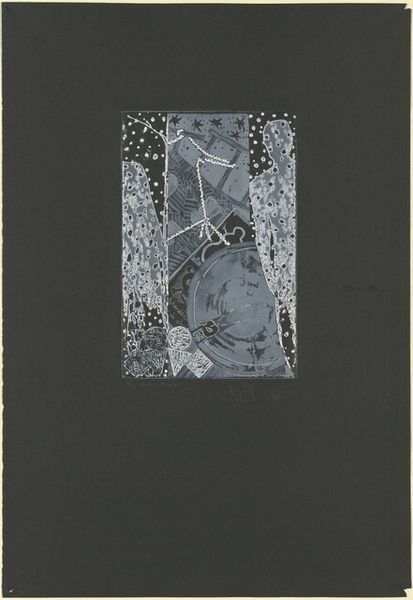
Copyright: Kazuo Nakamura,Fair Use
Curator: Welcome. Here we have Kazuo Nakamura’s, “In Space, Blue Irises,” completed in 1967. Editor: My first impression is one of calm detachment. The irises seem almost weightless, floating serenely against this expansive blue. Curator: Nakamura, a prominent member of Painters Eleven, employed a distinctly modern style. Notice the arrangement—the scattered irises and leaves resist traditional landscape composition. This allows us to read each bloom individually. Editor: Yet there’s a poignant sense of dispersal here, evoking conversations around the loss of species and the destruction of nature. The solitary blooms stand as spectral presences of what was. Also, note the color swatches; can we consider the implications of placing the pure scientific expression alongside this gentle art? Curator: That’s an interesting perspective. I see those more as a nod to scientific inquiry and the systematic breakdown of color, something integral to the artist’s focus on grids and patterns in nature, a means to get at its core essence, the pure formalism behind it all. Editor: Perhaps, but I believe that this intersection introduces commentary about our collective environmental consciousness. Each petal can be read as a symbol of fragility and the shared stakes of nature within human society. Curator: Indeed, one could view Nakamura's modernist treatment as reflective of postwar anxiety surrounding technology and scientific dominance. Editor: These anxieties are also mirrored in issues of access and distribution when it comes to resources, the rights of local populations, and conservation itself. Nakamura created this piece during a particularly heightened state of activism, no? Curator: It does spark so many conversations! Looking at this piece through your activist lens has certainly changed my perspective. It's truly a multifaceted painting. Editor: Yes, Nakamura’s “In Space, Blue Irises” embodies this very principle—a singular object becomes a portal for critical analysis and social thought.
Comments
No comments
Be the first to comment and join the conversation on the ultimate creative platform.
